#so many of these have such good music
Explore tagged Tumblr posts
Text

The Yiling Band Tour!
#poorly drawn mdzs#mdzs#wei wuxian#wen qing#wen ning#digital art#animation#This was a fun style experiment and a good lesson in 'hey you have less than a week to make this project. You cannot be a perfectionist'.#Right now - posting these slightly upgraded frames is really helping me stay motivated through the learning grind.#But progress is happening! I'm so excited to show it off when it's done!#Someone with a very discerning eye might be able to figure out what I'm doing with just this one frame. I will take the risk.#That aside; I often think about how the nature of cultivators in MDZS's world also entailed knowing about other art forms.#Meaning that Wen Qing and Wen Ning likely were good musicians and artists.#We know WWX is also good in art and music so...really...what was stopping them from forming a band?#Allow me to pitch this AU: Yiling Opera company AU. WWX and the Wen remnants form a performing trope and tour towns and cities.#Not only do they find a way to keep on the move (no home...only the road and the people around you).#But you also get to be in costume - which is a socially appropriate way to always be in disguise.#Yiling Laozu would thus be a character and/or WWX's stage name.#Would he be good at keeping it a secret? Hard to say with WWX! I think it would be a poorly-kept secret at best.#He likes to brag and show off a bit too much. This many would be either the worst or best spy.#Consider the drama of JC losing his mind over his ex-brother becoming a clown. Imagine JC Getting his ass kicked by said clown.#Imagine the delectable secret identity drama potential of Lan Wangji stumbling upon the trope's performances.#We did not get nearly enough of the secret identiy drama in MDZS canon. I need more of it.#I need that man conflicted with his feelings for the same person. I need them playing mind games with each other at all times.
934 notes
·
View notes
Text
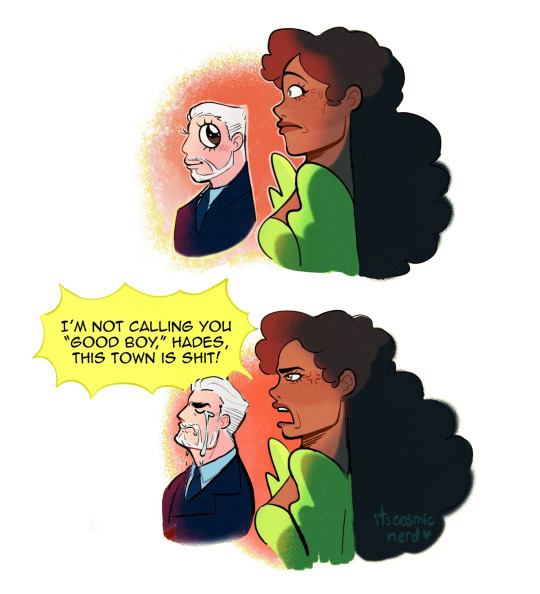
Chant I in a nutshell…
(OG meme under the cut!)

#hadestown#Hadestown fanart#persephone#hades#I usually struggle with drawing hades#I drew this hades in less than 2 mins#the coloring took hours though but it was super therapeutic and fun#I have so many shitpost ideas so#expect more#Hadestown shitpost#itscosmicnerd#good boy#good boy meme#hadestown the musical#fanart#hadestown meme#hades & persephone#hades and persephone#hades x persephone#hades fanart#persephone hades#artists on tumblr
2K notes
·
View notes
Text
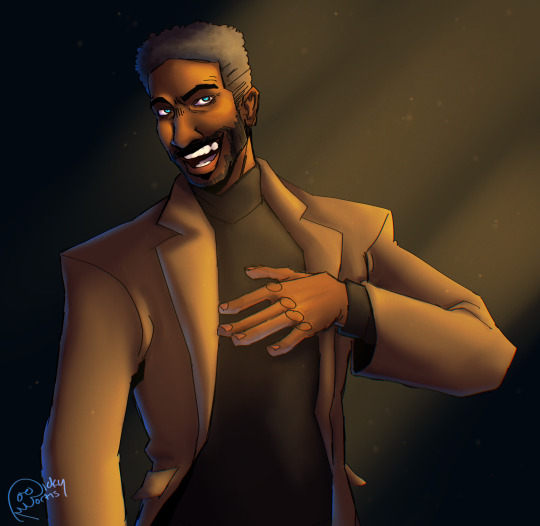
I heard that Corey Dorris sang Show Stopping Number at Innit- so I present: Corey!Hidgens
#super excited for yall who got to go to Innit- I heard it was a blast!#this was super fun#I’ve hardly ever drawn Corey so this was good practice#gotta draw more Corey characters fr#he’s such a legend#seriously what a man#have I ever mentioned that I’m a sucker for cast swaps?#they are my favorite#I have so many things written in my drawing ideas note that are just cast swaps#and lemme tell you I’m so excited to draw them#yall next week I’m going to be doing so much drawing#I’ve got exams this week but after that I’m free (until finals)#ok fun fact time#fun fact: sharks are older than trees#that one’s a little common but I think it’s pretty cool#ok that’s all have a great day!#corey dorris#professor hidgens#professor henry hidgens#henry hidgens#show stopping number#the guy who didn't like musicals#workin boys#cast swap#starkid innit#hatchetfield#hatchetverse#Starkid#team starkid#my art
1K notes
·
View notes
Text
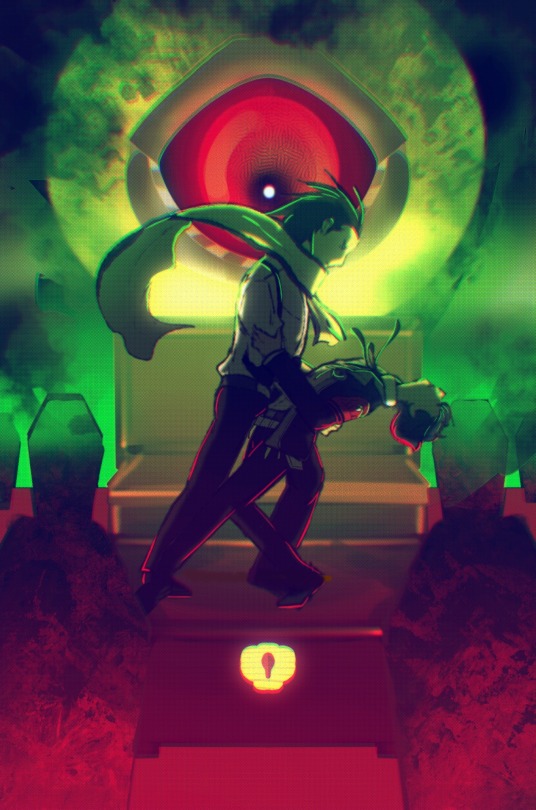
say goodbye as we dance with the devil tonight, dont you dare look at him in the eye
#guess my new brainrotttt#hey so uhh im fully aware so many dance with death concept pieces have already been done with this pair but i wanted to try my own knack#um. persona 3 good. thats all i can say really…#p3re#persona 3 reload#ryomina#ryoji mochizuki#makoto yuki#minato arisato#persona 3#p3#persona#nyx#kind of.#please please please notice the music box pleaase#i also had a lot of fun with post prod on this one#chromatic abberation >>>#piano arts#p3re spoilers
1K notes
·
View notes
Text

Fighting for my life
#extended-art#richie lipschitz#npmd fanart#npmd starkid#nerdy prudes must die#nerdy prudes fanart#i wanted to do like a cool pose composition thing but i literally couldnt#i tried so many times and then i just gave up and drew this portrait which was originally full body as well :sob:#been a while since ive done like grayscale shading though and thats always fun i love you values#i hate his fucking hair though never again (i say definitely going to draw it again)#i have now seen all three musicals though!! all very good
158 notes
·
View notes
Text
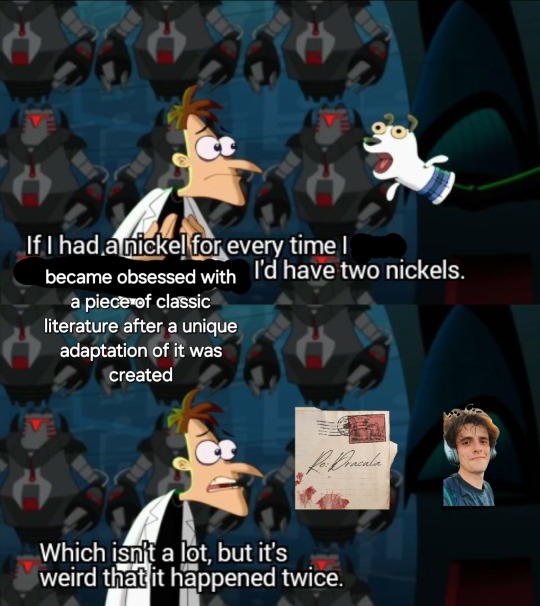
#the underworld saga dropping and crushing me one week before my good friend jonathan harker begins his own very normal journey to get home#hand shake meme of odysseus and jonathan harker and in the middle is just “i want to go home to my wife :(”#but the HORRORS#THE HORRORS WONT LET THEM RRRAAHHHHHHH#anyway have this meme#i tried so many times to get the underworld saga art on this but the software kept fucking it up so instead its#mr rivera-herrans' face#ok see yall in a few days for dracula daily again but until then#ALL I HEAR ARE SCREEEAAAMMMS#dracula daily#dracula#re: dracula#epic the musical#the underworld saga#epic the underworld saga#jorge rivera herrans#odysseus#the odyssey
642 notes
·
View notes
Text
Having an annual breakdown about how much i owe to this band. The friends I've made. The moments of mutual panic and excitement about new things dropped by the band in real time. People to go to concerts with who don't make me feel like they're there with me only to humour me. People who understand the emotions i am going through because of that thing we like. I've never had this before. Never!! This stupid fucking band is so important to me for many reasons, but the friends it helped me find is the most important reason of them all.
#alex is for once serious on main#this rarely happens huh!!#but i still can't get used to the feeling of having so many lovely people around me who just Get It and don't look at me with pity#when i try to explain why something is so important to me#don't get me wrong i have good friends irl but they never understood that part of me no matter how excited about the same music they were#mutuals. friends. i love you all
86 notes
·
View notes
Text




WOOOOOOOO Doodle drop! 🎶
#Long week! But I always have time to doodle this peanut#I have been listening to so many 70s and 80s songs!#I really enjoy Talking Heads! Their music is rly good#welcome home#welcome home arg#my art#doodles#wally darling#welcome home wally#latter pillar#welcome home latter#teachyouhowtodothesponge
281 notes
·
View notes
Text
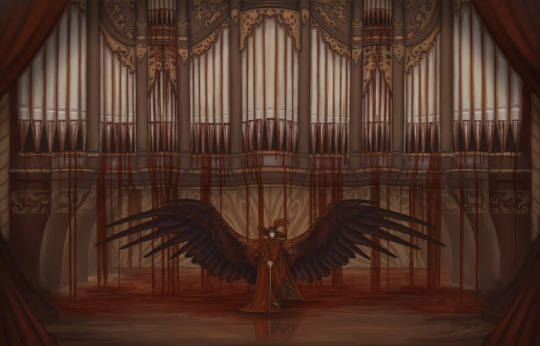
Red Death has come to take what is rightfully his own.
Version without wings under the cut:
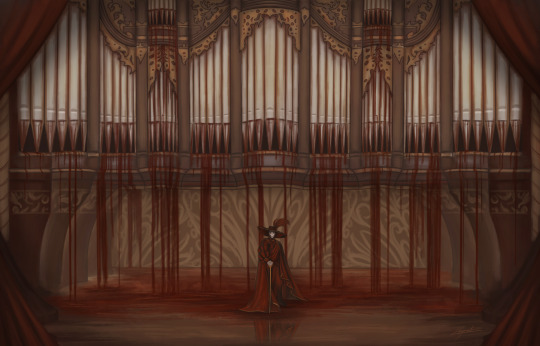
#gotta love some good old symbolism in art#in Susan Kay's book Erik also calls himself an Angel of Death#painting blood on things where it's obviously not supposed to be is my new favorite thing#for anyone wondering the organ design is based on the Bach-organ in Regensburg (Bavaria)#the Paris Opera sadly doesn't have such a glamorous one but that didn't stop me#it's artistic freedom baby#digital art#artwork#phantom of the opera#erik the phantom#poto#erik destler#gaston leroux#susan kay phantom#angel of music#phanart#leroux phantom#I spent so many hours on this holy shit
625 notes
·
View notes
Text
On a basic human level if you do not like the Rings of Power soundtrack, composed by the excellent Bear McCreary, I do not trust you.
#people talk about Howard Shore all the time#which like- GOOD. hes amazing#but Bear is just as good#if not more in some bits#do you have any idea how many themes he had to compose and score???#how many odd instruments and stuff he pulled in for the job??#how he *sounds* like middle earth#just as much and even more in some bits than Shore#give the guy more credit man he needs it#even if you don't want to watch RoP PLEASEEEEEE listen to the music he did for it#my mind is blown all the time by it#he worked so hard on all of it#and it SHOWS#sunkissedliterarylightofchrist#music#bear mccreary#rings of power#trop#lotr
75 notes
·
View notes
Note
"magical boys"
*BREAKS DOWN A WALL AMD CHUCKS MINI ROLLOS TO ANYTHING IN SIGHT*
WHERE?!
*visibly shaking* I am normal about this reversal trope of magical girls. I can definetely be trusted to not squeeze this mozarrella with a bowl cut to death. *mini rollo definitely being squeezed to death*


No idea if it's three anons or one but that's really sweet ✨ pls beware depending on which guy you plan to eat some of them give food poisoning or hallucinations (thinking abt some as those small colorful rainforest frogs)
I love magical girl animes very much, grew up watching tokyo mew mew (and somehow managed to watch wedding peach all on youtube a long time ago, i did not understand the english subtitles at all lmao, rewatched it years later and loved it), so imagine my surprise when I stumbled accross the first (if you ignore saint seiya) full on magical boy anime in 2015 and ever since I wanted to draw my own, and now I have my musketeers :)))
A lot more magical boy yapping under the cut because I love this trope so much
Anime I'm talking abt is 'Binan Koukou Chikyuu bouei-bu love' btw ! It's on the parodic side but not as much shitpost-ish as 'magical girl ore' for example. It takes itself "seriously" in it's own way. (and the ending song talks about 2 characters of the show that drifted apart and how there's 3 meters only separating them but it's enough for one to miss the other and aughhh my heart I could yap about this for ages)
LOOK AT THEM (couldn't find a decent pic of the season 1 clothes, this is season 2 and the pic is still low res augh)

Like, I was ?? idk in my last year of middle school maybe when I found this ?? fantastic discovery. Pink wombat mascot with the voice of an old man gives cute bracelets to 5 guys to save the earth. They have to say "love making" and kiss their bracelet to transform, I'm crying And here's the villains of season 1 and season 2 (twins) (silver haired bowl cut annoyed guy is my favorite, what a familiar description....)


There's 3 seasons in total to this anime and season 3 has a new cast of guys but years later at the same school !


Scenario is basically the same as season 1 but with different guys and villains, but omg the otter..... I love that yellow otter so much..... (look they have magical ace and deuce ) Villains of season 3 are called "edelstein knights" or something (ince again an angry guy with ridiculous bangs considered a villain, my beloved)
Other legit magical boy I love a lot is 'Fairy Ranmaru' !! It takes itself more seriously than binan koukou, in it's own scandalous way I'd say. They went ham with the fanservice during transformations it's crazy-(especially uruu's transformation) def +16 at least They do try to talk about serious matters and feelings/emotions in general. I cant' really tell if it's well written since I'm really an easy audience, I should watch it a second time... It's a visual experience at least if you're into that kind of designs

Blue guy my beloved.... Not showing any more, you can find the transformations on yt crunchyroll literally published them
Alright one last "magical" boy/girl, it's not even exceptionnal but it's a fever dream shitpost that has a special place in my heart : 'Classicaloid' So a girl's father created humanoids with the memories of classical composers and went to get milk, leaving them all. The classicaloids eventually decide to squat at the girl's house. They have magical powers called "musik" and have a small transformation animation. So to a certain extent I do consider this a magical people anime.

Here's everyone from season 1 (untransfromed) Beethoven and Bach (maybe mozart too tbh) are the most recognizeable but good luck to guess the others :') (Liszt and Tchaikovsky are genderbent) They are all so whacky together I love them so much, bach only speaks in musical terms "andante, pianissimo etc.." Chopin is the looser of all times, Mozart is.... Mozart, and Dvorak (season 2) became a pigmy hippo for literally no reason The animation is nice but the ending song illustrations ??? dang



First two pics are from season 2 endings, they all represent an important location for the composers or something related to them (for example Chopin's is the père lachaise cemetery in paris where irl one has a tomb) Really I'm amazed by all the ending art pieces, I can't put more than 10 pics per post, I would've showed them all otherwise eeee) On the thrid pic you actually see mozart in his musik outfit ! An in one ep he even lets his hair loose ahierjh
(takt:op is absolutely in my watchlist)
If you made it this far thank you for listening to the yapping, wether it was interesting or not ! :)))
#Idc if yall already know these animes here's my yapping powerpoint anyway#I love colorful chara designs aughh#Classicaloid is just the merging of many things I like- weeb - magical - shitpost- and classical music and it pleases my brain#I have so many screenshots of chopin(loid)#I should do some more make fanart of all these magical boys tbh now that I'm feeling convinced by how I draw#music animes in general are good aughh mashiro no oto or kono oto tomare!!! (hell even utapri I loved watching this in middle school)#The kongming anime was so good and fun too omg#man I love music#I hope there will be more magical boys in the future or even an everyone magical pls#cease this torturing of the mini-rollos !!!!!!!!!!
70 notes
·
View notes
Note
I just want you to know that I was rereading the PDMDZS comics yet again, and I finally caved and watched Legally Blonde because you're like a puppeteer that draws things and I'm like "well, guess I have to see it now." Now, after watching Legally Blonde, I must tell you that Elle Woods is love, Elle Woods is life, Elle Woods is everything to me. Elle Woods would have been able to save Wei Wuxian from the Jins all while looking sparkly and fantastic as she does it. (Obviously with her hype girlies in the background)

Her power and influence know no bounds!
#ask#elle woods#legally blonde#Of all medias to have indirectly convinced someone to see for the first time - I am so honoured to know one of them was legally blonde.#It's just a damn good movie about not letting other's bias limit you.#And to not let other people's shitty opinions of you define you!#It's also about how femininity is constantly regarded as something that is a 'weakness' but Elle shows up in pink! Stays true to herself!#Legally Blonde is the antithesis to Grease. That's a rant for another day#If you're willing to keep trusting me...There's a musical version of legally blonde that is very good.#Anyways. Elle Woods can't be in MDZS only because she would have solved so many problems that are essential for the plot to happen.#Elle would have lawyered the hell out of all of the defamation and war crimes going on.#Elle would have shown up with a big ass sword and won the war.#It's just me doing my part by having her be WWX phone lawyer as a running gag.
500 notes
·
View notes
Text
“Musical about a green magic girl who's totally alloaro, trust me, where are you going she's alloaro, I have a whole powerpoint presentation stop backing away from me I have proof she's alloaro just listen to me” - Things I tell my friends to try to get them to watch media I like
#okay; i don’t actually have a powerpoint presentation or an essay or detailed notes yet#and that’s in large part because i don’t have a good way to access the story beats that occur not in song#and that has to do with the fact that stage musicals need to be treated differently than movie musicals#when you want to go about analyzing them;#so it’s entirely possible that there’s parts of the story i don’t remember that either#make it hard to view elphaba as alloaro; or make that interpretation/headcanon problematic;#but cmon. if you look at the original broadway cast recording she’s _clearly_ alloaro#the green the ostracization the voidpunk the imperfect girl she isn’t#and the motifs! so many motifs! don’t know what they all mean yet but there’s so many motifs!#wicked#aro#alloaro#allosexual aromantic#aromantic#aspec#queer#lgbtq#original#media analysis#unpolished media analysis
120 notes
·
View notes
Text

Anyways I now have so many feelings about odysseus and penelope wearing each other's clothes
#Odypen#epic the musical#The odyssey#It works for both so I'm tagging both#Odysseus#Penelope#Omg I know he didn't but imagine odysseus showing up to the war in /in his wifes/ clothes#Okay but post-canon none of odysseus's clothes fit him anymore so while penelope is making him new ones he#Just borrows her clothes for like the first year of being home#They both have many happy possessive feelings about this#Justifiably so#I was actually looking up Greek clothing for angst related reasons but good to get the romance out first
137 notes
·
View notes
Text
Another self-indulgent sparkly edit of Arkham riddler
#IT COMPRESSED MY VIDEO AGAIN HOW DO I STOP THIS GOD DAMN IT#seriously it look like shit#there is an NSYNC song called ‘Riddle’ and I NEED TO MAKE AN EDIT WITH IT ARE YOU KIDDING ME ITS PERFECT#I need to make many more of these to many different songs#I have other ones but I never feel like they’re finished so I never post them#I think I’m good at edited clips together but adding affects and transitions is really hard#often my clips have very a specific connection of sorts to the music and or lyrics#and I want the viewer to register exactly what the figure in the clip is doing#but when affects and transitions are added the viewer loses the ability to register and connect the clip to the music and I don’t want that#I am over thinking this WAY WAY to hard probably#batman#the riddler#riddler my beloved#edward nygma#arkham riddler#arkham knight riddler#arkham knight#edit#nsync#Spotify
39 notes
·
View notes
Text

When they kissed I lost my mind
#I started this literally the second it happened#deadass had the thumbnail 10 minutes max following Thank Gravity#and I think that the idea that Rose dipped John is just stellar#(pun intended)#I care so much about them#pulp is so good guys#it’s all I can think about right now#and will be for the foreseeable future#I have so many ideas that I want to draw#currently ive got like 10 thumbnails not kidding#I’ve got a lot of things I need to draw#pulp musicals#pulp musicals spoilers#the searcher in the shadows#the searcher in the shadows spoilers#tsits spoilers#tsits#sir john herschel#john herschel#rose stratford#curt mega#mariah rose faith#mariah rose faith casillas#paper stars#my art
129 notes
·
View notes